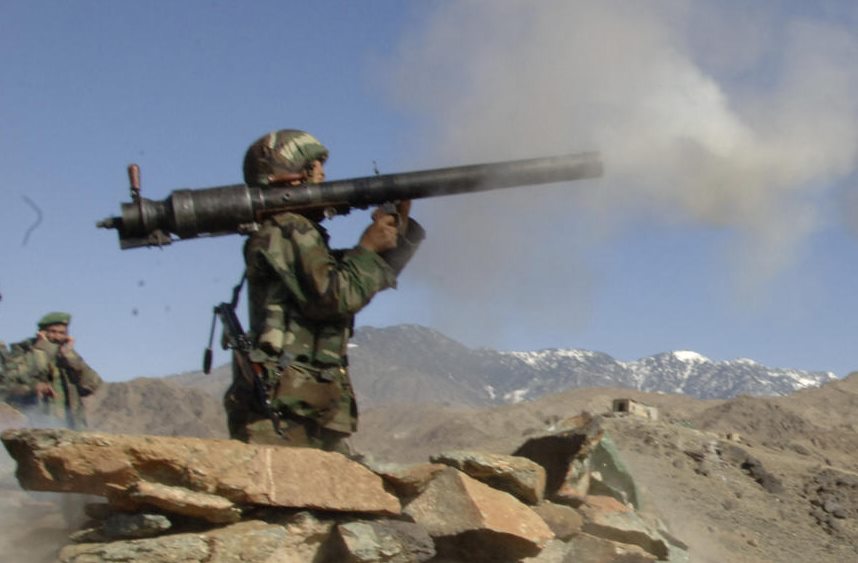
Chinese-made Type 65-1 recoilless gun, which is a slightly modified clone of Soviet B-10, is being fired from the shoulder; present day, somewhere in the Middle East
The 82mm B-10 recoilless gun was developed during early 1950s and adopted by Soviet army in 1954. It production in USSR was ceased in 1964, with adoption of a more effective SPG-9 weapon of the same class. License production was carried out in Bulgaria, China and Yugoslavia. China still produces and sells its own version of the B-10, known as type 65 and Type 65-1, which can be encountered in many past and current local conflicts in Africa, Asia and Middle East.
B-10 is a smooth-bore recoilless weapon with nominal caliber of 82mm. It is breech-loaded, with side-opening breech that has a Venturi nozzle. It is normally mounted on a lightweight adjustable tripod, with removable wheels. Aiming is achieved through a specially designed optical sight that can provide both direct and indirect fire (latter used only with HE-FRAG ammunition). When fired, weapons creates a dangerous back-blast with safety zone behind the gun being 10 to 30 meters long. Typical crew for B-10 gun is 3 or 4 men.
Due to location of firing controls near point of balance of the barrel, B-10 can be fired from the shoulder and without tripod, a method widely employed during many recent local wars. It certainly makes shooting noticeably less accurate, but also provides greater tactical flexibility and mobility and, thus, improves survival chances of the crew during combat, especially in urban areas.
Two main types of ammunition for B-10 gun are MK-10 round with HEAT warhead (armor penetration about 250 mm RHA) and MO-10 with HE-FRAG (fragmentation, with killing radius of up to 50 meters) warhead. Both types of ammunition feature fixed tail fins for in-flight stabilization, and a propellant charge, mounted around its thin tubular tail in a canvas bag. Muzzle velocity for both rounds is about 320 m/s. HEAT rounds are used only for direct fire, FRAG rounds can be used for both direct and indirect fire. When fired in indirect mode, it can reach ranges of up to 4200 meters.
Basic specifications
Caliber: 82 mm
Length: 1910 mm
Weight: 49 kg gun body + 22 kg tripod + 13 kg wheels
Effective range: 390 meters (direct fire), 4200 meters (indirect fire)
Armor penetration: up to 250 mm RHA